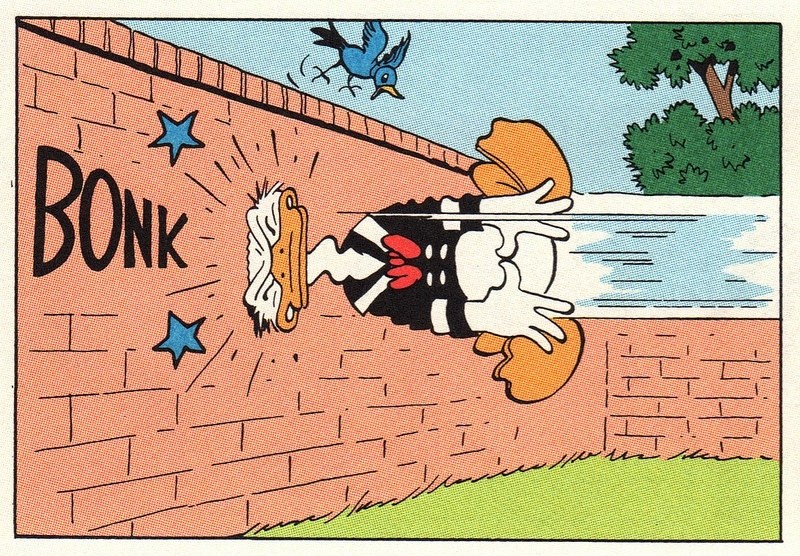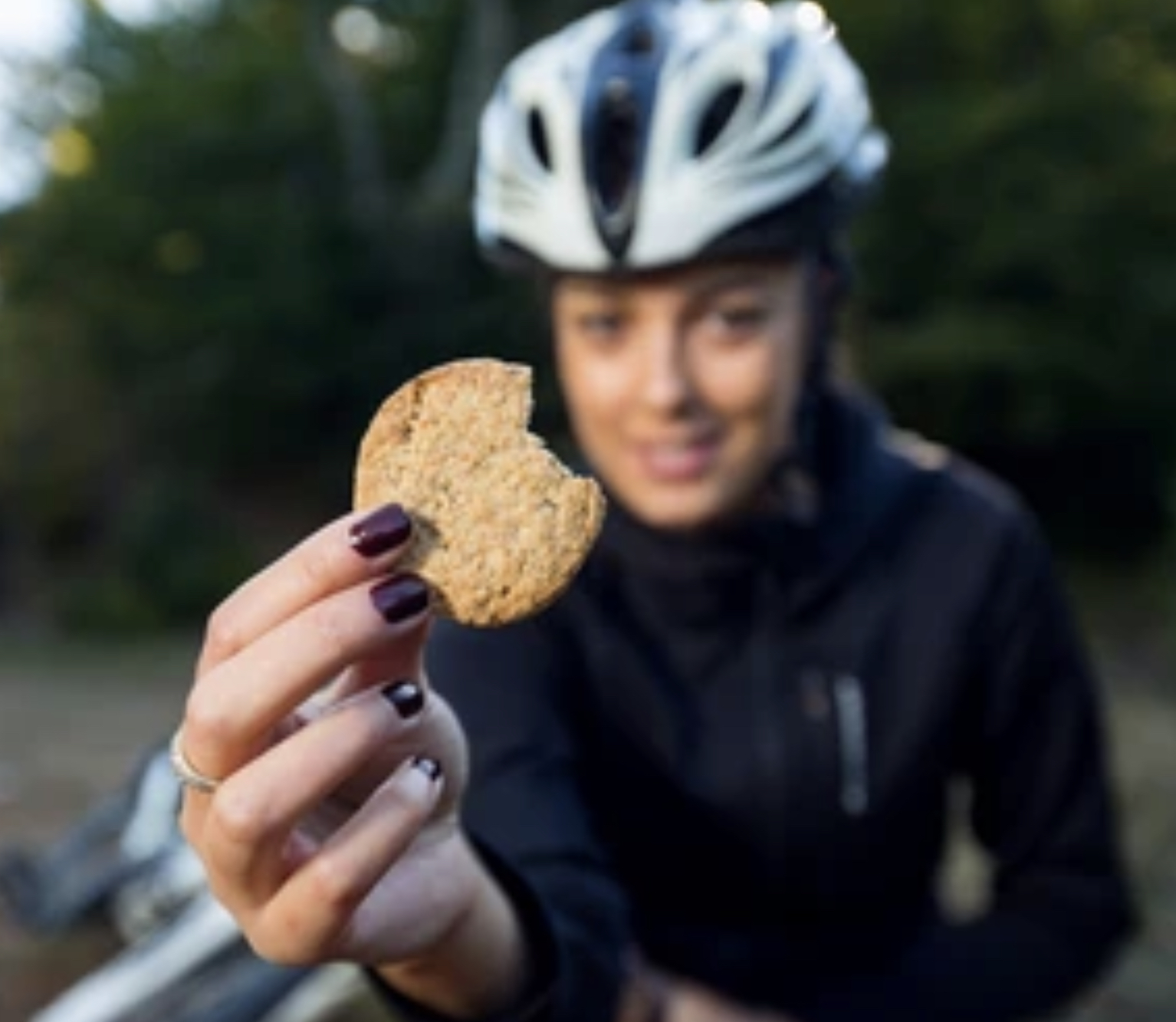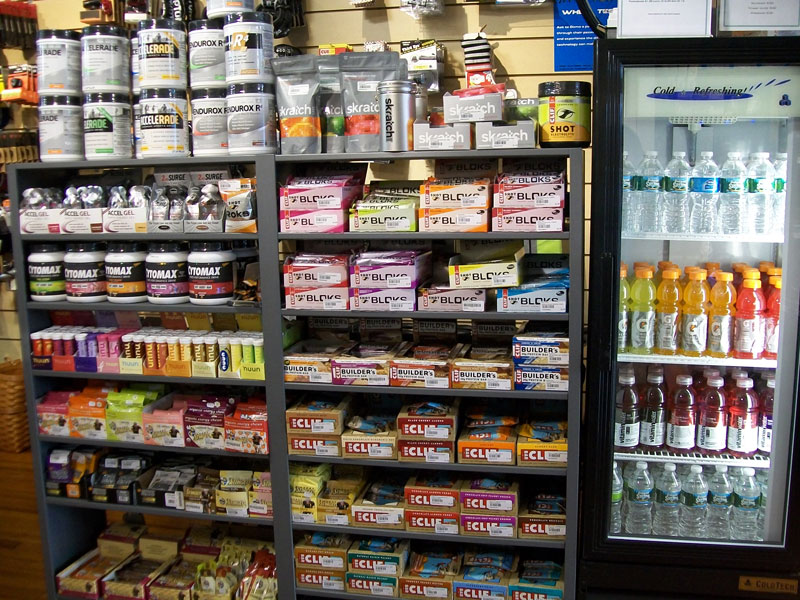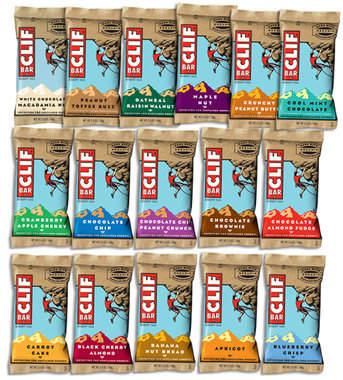When exercising with intensity for extended periods (usually over 90 minutes) your muscles can run out of fuel (glycogen) and your brain will tell you in on uncertain terms to stop what you are doing immediately! This awful feeling of leaden muscles and mental fugues is called ‘hitting the wall’ or in cycling ‘the BONK’. The symptoms can be quite acute and make competitive cycling all but impossible, not to mention dangerous.
Fortunately the dreaded bonk can be all but prevented with some easy to follow measures.
Let’s look at what bonking is and how to avoid it whilst cycling.

Why is it called bonking in cycling?
Hitting the wall is called the bonk in cycling because people used to say it feels like being hit or ‘bonked’ on the head and knocked out!
What causes the bonk?
On rides over an hour and gaining intensity, correct fueling allows you to ride harder and longer. On longer rides your body can basically burn through its energy supplies and the result of this is not fun at all. This has lots of names but is commonly known as ‘Hitting the wall’ or ‘The bonk’. It’s actually a form of exercise induced hypoglycaemia but if you are experiencing it you probably wont be able to pronounce that.
What happens during a bonk?
When you hit the wall you have basically depleted your available reserves of glycogen. This is the fuel your body converts to glucose to use for energy. Your body will then do its best to make you stop what you are doing until you take on some more fuel (simple sugars are best).
What does bonking on a bike feel like?
Hitting the wall is not fun at all. Once you have experienced it you will do your best not to go though it again. It comes on, sometimes quite quickly as light headed/dizziness and jelly like leaden legs and a mental funk that makes you want to get of the bike and never cycle again.
How do I stop cycling bonking?
If you hit the wall half way through a long solo bike ride then you are in for a bad day. To stop this simply take some food with you or plan some rest and refuel stops. A cafe stop mid ride is a popular cycling habit for this reason.
How do you recover from bonking?
If you are cycling and bonk you will need to refuel with simple sugars to replace muscle glycogen reserves. Rest and fuel are the answer. Ideally a coffee shop with nice cakes but some sweets and a five minute break will do in an emergency. Stopping during a ride can be pleasant but what about in competition?

How long does it take to recover from Bonking?
Recovery time varies and can be as little as a few minutes once you refuel and hydrate. Once you start to feel better you need to ride at a ‘recovery pace’ and continue to take on more carbohydrates as you ride.
Can you prevent the bonk during exercise?
Yes! It can be avoided altogether. Once you experience it you will not want to do so again.
Prevention is better than cure in this case so lets look at ways to prevent exercise induced hypoglycaemia (the bonk).
How Do You Prevent The Bonk?
Eating correctly before intense exercise will give you a store of energy but it cause issues if you eat too close to the start of your workout. Instead try to leave a gap of around 90 minutes after a meal. You can get used to eating closer to your workout but it can cause some discomfort. Replacing muscle glycogen during cycling is essential on longer rides.
Taking on some fuel made of simple sugars during riding is enough to stop the dreaded bonk. If its moderate intensity riding then you don’t need to be too scientific, simply have a sugar based drink in your water bottle and eat a few jelly sweets as you ride. For more intense training or competitive riding your body needs 1 gram of carbohydrates per kilo of body weight per hour + regular water intake.
What to eat to prevent Bonking?
Your muscles (and the rest of you) require glucose to fuel them. This can be consumed during your ride in any way you like but the usual method is a sugary drink, energy bars/sweets or energy gels. There are tonnes of dedicated cycling energy products available so test a few out to find your favourite. If you prefer to keep it simple/affordable you can just put fruit juice in your bidon and carry some flapjack with you (not very scientific but very effective for almost zero cost).
Early tour de France riders set out on stages in the 1920s with pork chops in their handlebar bags and often called in to pubs on the route for a beer (this approach is not recommended currently).
Hitting the wall / Bonking Summary:
Your body running out of energy is not fun at all but can be avoided with a simple fuelling strategy.
If you are cycling for 1 hour or under then nothing is needed unless its really hot in which case you will need water. Anything over about 90 minutes will need some kind of feeling strategy. This can be something as simple as a cafe stop or taking some snacks.
If you are training hard or cycling for extended periods you will need to take on more calories and pay extra attention to what and when you consume. Always start to eat and drink on the bike before you feel thirst or start to bonk!
Longer more intense riding needs 1 gram of carbs per kilo of body weight per hour + regular water intake. Electrolyte drinks are also advised to replenish the salt lost through perspiration.
Vary your intake of food type and eat properly before and after the ride.
Cycling for weight loss requires more miles / intensity and a balanced diet , not inadequate fuelling during rides.

“Beyond pain there is a whole universe of more pain.” -Jens Voigt




